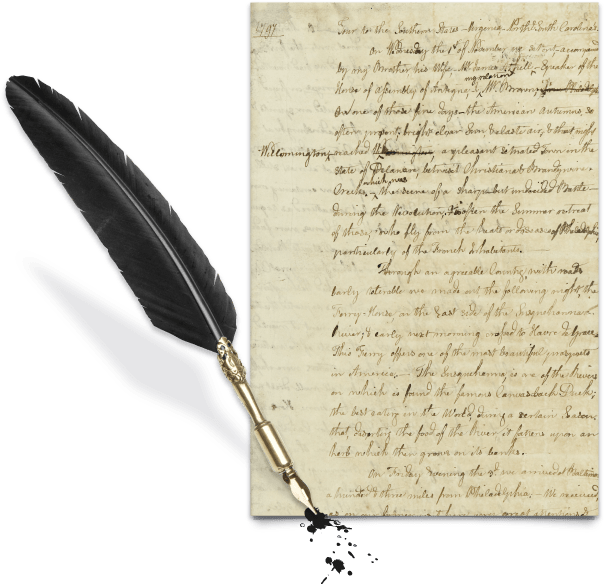Selected people named in this journal
Names in brackets are how Henrietta Liston refers to that person or spells their name in her journal.
John André 1750-1780 ('Major André')
Benedict Arnold, 1741-1801 ('General Arnold')
John Burgoyne, 1723-1792 ('Bourgoinne')
Army officer, politician, dramatist. Born in London to Anna Maria Burneston and legally the son of Captain John Burgoyne, but possibly fathered by Robert Benson, John was educated at Westminster School. In 1744 he purchased a commission as a cornet in the First Dragoons. In 1751 he eloped with Lady Charlotte Stanley, sister of his close school friend James Smith Stanley and they travelled in Europe. Charlotte died in 1776. John advanced his military career in the Seven Years' War and was promoted colonel after his capture of Valencia de Alcantara. Lord North appointed John head of the Canadian army and he commanded a large force against the Americans in the Lake Champlain-Hudson River Valley. In October 1777, after a decisive defeat in the battle of Saratoga in upstate New York, John surrendered his army to General Horatio Gates. Back in London, John authored successful plays. From 1782 John fathered four children by the married actress Susan Caulfield.
Elizabeth Cornell Bayard, 1762?-1784 ('the Byards')
Elizabeth was the daughter of Susannah Mabson and the Loyalist Samuel Cornell. In 1783 she married William Bayard Jr (1761-1826), a merchant and banker from New York. They had seven children. The Bayards were friends with Alexander Hamilton, who died at their house after being injured in his duel with Aaron Burr.
Sir Henry Clinton, 1730-1795 ('General Clinton')
David Montagu Erskine, 2nd Baron Erskine, 1776-1855
Diplomatist. Having studied at Trinity College, Cambridge, David Erskine lived in the United States for four years and worked with Consul Phineas Bond. In 1799 he married Frances Cadwallader, daughter of General John Cadwallader of Philadelphia. In July 1806 he was appointed Minister-Plenipotentiary to the United States of America and was recalled in 1809. He was Minister-Plenipotentiary at Stuttgart, 1824-1828, and Minister to Bavaria from 1828-1843.
Johannes Glen, 1735-1828
Military officer, landowner, businessman.
Sir William Johnson, 1715-1774
Superintendent of the northern Indians, merchant, colonial official. Born in County Meath, Ireland, William settled in North America in 1738. He developed a good relationship with the Haudenosaunee (Iroquois) and became a wealthy landowner and militia officer in the Mohawk Valley. During the Seven Years' War he helped secure the British alliance with Haudenosaunee — the 'Six Nations Confederacy' — against the French. Mary Brandt (1736-1796), the Mohawk clan mother Konwatsi 'tsiaienni, became John’s wife and they had eight children. Mary's brother, the Mohawk chief and statesman Thayendanegea (Joseph Brant), was a close friend and translator to Johnson.
Ann Lee, 1736-1784 (Anna Lees)
Religious leader. Born in Manchester, England, Ann founded the Shaker society. She moved to New York in 1774 with her husband and a group of followers.
Sir Robert Liston, 1742-1836 ('Mr Liston')
Diplomat. Born in Kirkliston, Scotland, Robert Liston became an influential diplomat and was the second person to serve as British Minister to the United States, 1796-1801. Robert's service coincided with a highly significant period in British-American relations. In 1796 he married Henrietta Marchant Liston.
Nicolas Low, 1739-1826
Merchant, financier, land speculator, state legislator. Nicolas married Alice Halliburton Fleming (born 1758?) in 1794. In New York in 1799 they had a daughter whom they named Henrietta Liston Low. Henrietta Liston mentions her 'name daughter' in her will of 1808.
Daniel McCormick, 1739/40-1834?
Businessman and banker. Born in Scotland, Daniel emigrated to America as a young man. With Alexander Hamilton, Daniel became a founding director of the Bank of New York. He was a close friend of Robert and Henrietta Liston while they were in the United States and expressed great sadness when they returned to Britain. A number of Daniel's letters to Robert Liston survive in the Liston Papers at the National Library of Scotland.
Jane McCrea, 1752-1777 ('Miss McCray')
Lord Henry Stuart, 1777-1809 ('Lord H S')
Henry Stuart was the fifth son of the politician and diplomat the 1st Marquess of Bute, John Stuart, who Robert Liston was secretary for in Italy. Henry's mother was the wealthy heiress Charlotte Jane Hickman Windsor (1746-1800) who died suddenly on 28 January 1800. From the summer of 1796 to December 1800, Henry was secretary to Robert Liston, British Minister to the United States in Philadelphia. In 1802 he married the wealthy Irish heiress Lady Gertrude Amelia Villiers. They had three sons and a daughter. Henry died aged 32 and was buried in the Bute Mausoleum in St Margaret's Church, Roath, Wales.
Sir Edward Thornton, 1766-1852 ('Mr Thornton')
Edward Thornton, like Robert Liston, was a self-made diplomat who entered the service through connections he made while he was tutor to the sons of a well-connected political family. Having served as secretary for George Hammond, Minister to the United States in 1791, he became secretary to Robert Liston in 1796 when he took over from Hammond. When Robert returned to Britain in 1800, Edward was Chargé d'Affaires until 1804. In 1812 he married Wilhelmina Koph and had seven children. After working on diplomatic missions in Sweden, he was appointed Minister to Portugal in 1817 and took up the position at the Portuguese Court in Brazil. In 1823 he went to Portugal as Envoy-Extraordinary and Minister-Plenipotentiary. He was made Count of Cassilhas by the King of Portugal and retired in a pension in 1824.
[Library reference for this journal: MS.5700]

